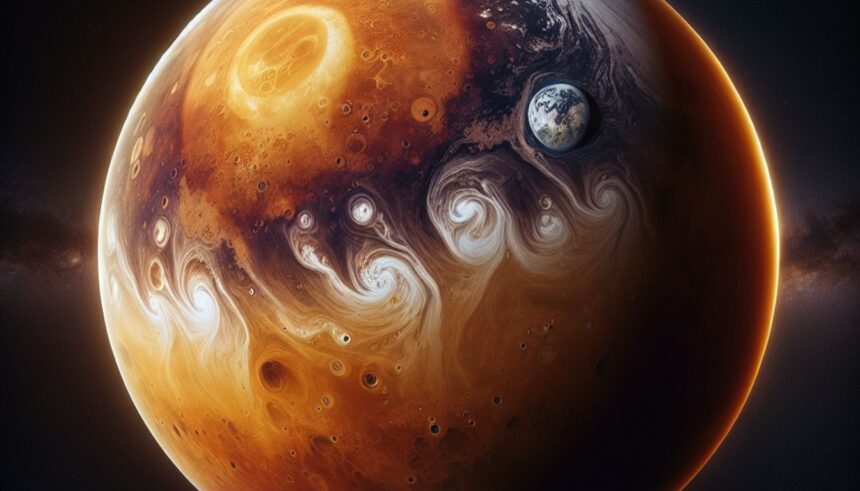Venus, often hailed as Earth’s sister planet, presents an enigma wrapped in a thick, toxic atmosphere, making it the hottest planet in our solar system. Its extreme conditions and similarities to our home planet have fascinated scientists and astronomers for decades. In this exploration, we delve deep into the mysteries of Venus, uncovering the forces behind its scorching climate and thick clouds.
The Enigmatic Conditions of Venus
Contrary to initial expectations, Venus exhibits environmental extremes that dwarf anything seen on Earth. With surface temperatures hovering around 465 degrees Celsius (870 degrees Fahrenheit), it’s hotter than any other planet in our solar system, including Mercury, which sits closest to the Sun. Venus’ atmosphere is dominated by carbon dioxide with traces of nitrogen, making it an unlikely candidate for human exploration without significant technological advancements.
Unveiling the Mysteries of Venus’ Atmosphere
The atmospheric conditions of Venus are nothing short of hostile. A thick layer of highly reflective clouds composed of sulfuric acid surrounds the planet, hiding its surface from direct observation in visible light spectra. These clouds reflect about 75% of the sunlight that reaches them, contributing to the intense greenhouse effect that warms the planet. This results in surface temperatures high enough to melt lead and create a seemingly infernal landscape.
Venus Compared to Earth
Despite the harsh conditions, Venus shares several characteristics with Earth, earning it the nickname Earth’s sister planet. Both planets are similar in size, mass, and proximity to the Sun, which initially led astronomers to believe they might have similar conditions as well. However, Venus’ evolution took a drastically different path, likely due to its runaway greenhouse effect, which led to its current state as the hottest planet.
Exploring Venus’ Geological Features
Even with its extreme atmospheric pressure — more than 90 times that of Earth’s — Venus showcases complex geological features. Vast plains, highland regions, and a few large mountainous areas cover its surface. Astonishingly, Venus is home to the largest volcano in the solar system, named Maat Mons. Unlike Earth, Venus does not show evidence of active plate tectonics, which may explain the absence of a magnetic field and contributes further to its mystique.
The Role of Missions in Understanding Venus
Decoding Venus and its extreme climate has been a high priority for the global scientific community. Past missions by NASA and other space agencies have provided data that have been crucial in understanding the atmospheric conditions and surface features of Venus. These missions include the Magellan probe, which used radar imaging to map the planet’s surface, and more recently, the European Space Agency’s Venus Express spacecraft, which studied its atmosphere.
The Future of Venus Exploration
The future of exploring Venus looks promising as new missions are planned to further investigate this enigmatic planet. NASA’s VERITAS (Venus Emissivity, Radio Science, InSAR, Topography, and Spectroscopy) mission aims to transform our understanding of Venus’ geological history. Additionally, ISRO’s Shukrayaan mission is poised to study its surface and atmospheric chemistry. These missions will help answer longstanding questions about the planet and potentially provide insights into Earth’s future as well.
In conclusion, Venus remains one of the most intriguing and mysterious planets in our solar system. Its extreme conditions and the secrets it holds about the early solar system continue to fascinate scientists and laypersons alike. As we plan more missions to this hostile world, we hope to uncover many of its mysteries, enhancing our understanding of not only Venus but also Earth and the dynamic processes that shape planetary bodies.







